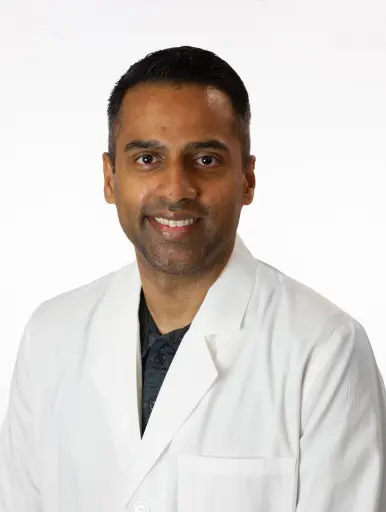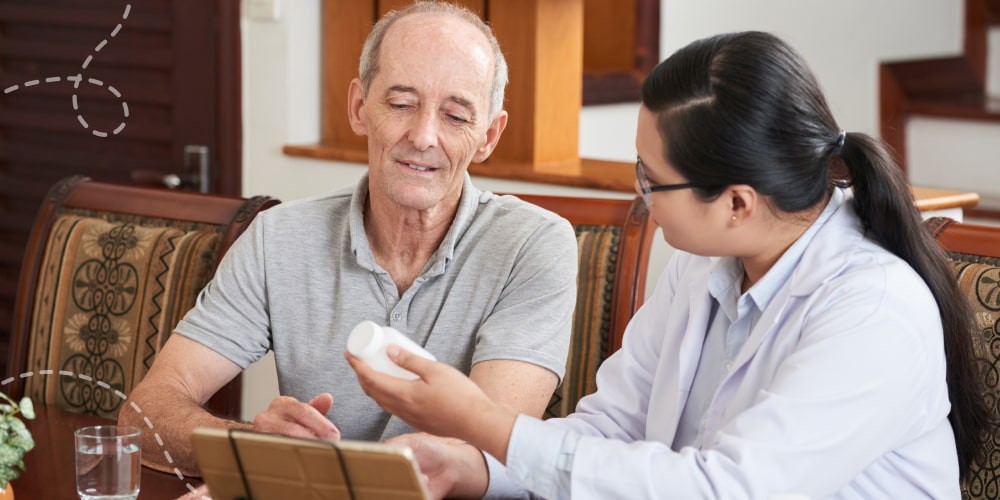This sleep malady poses significant challenges to affected patients. It impacts daily functioning and quality of life. We celebrate the first anniversary of our exploration into medical advancements and breakthroughs. It is fitting to delve into the evolving landscape of hypersomnia treatment options. Understanding the multifaceted nature of malady is crucial in navigating potential interventions. The quest for an effective cure plan has seen promising strides. They are from lifestyle modifications to pharmacological approaches. Cognitive behavioral therapy has shown efficacy in addressing underlying sleep disturbances. Pharmaceutical innovations continue to introduce novel medications. They target specific neurotransmitter imbalances contributing to hypersomnolence.
In this ongoing journey, we aim to unravel the latest research, clinical trials, and holistic approaches. That promises to ease the burden of sleep malady. Join us in exploring the frontiers of hypersomnia treatment at home. We will help you to manage your diagnosis by natural cure methods. They are absolutely safe.
Hypersomnia Diagnosis
Diagnosing this disease requires a comprehensive assessment. It helps to distinguish it from other sleep disorders. It is due to medical conditions contributing to excessive daytime sleepiness. The diagnostic process typically involves the following steps:
- Clinical History: Detailed discussions about sleep patterns, daily routines, and lifestyle factors.
- Inquiries about sleep onset, sleep maintenance, and waking patterns.
- Sleep Diary: It’s keeping for a designated period can provide valuable insights. It is about sleep habits, patterns, and potential triggers.
- Physical Examination: It helps to identify any underlying medical conditions contributing to hypersomnolence.
- Laboratory Tests: Blood tests are necessary to check for some conditions. Among them are hypothyroidism or other metabolic disorders associated with excessive sleepiness.
- Polysomnography: Overnight sleep studies, including PSG, check physiological parameters. Among them are brain waves, eye movements, and heart rate. Also, they include respiratory functions to detect abnormalities in sleep architecture.
- MSLT: It assesses daytime sleepiness. MSLT happens by measuring the time it takes for an individual to fall asleep during designated nap opportunities.
- Actigraphy: Continuous monitoring of sleep-wake patterns using a wrist-worn device. It provides aimed sleep duration and timing data.
- Psychiatric Evaluation: It is assessing mental health and evaluating for mood disorders. That might contribute to hypersomnia.
- Neurological Evaluation: Such examination may sometimes rule out conditions affecting the CNS.
A collaborative approach involving sleep specialists, neurologists, and other healthcare professionals. It is crucial for an accurate hypersomnia diagnosis. The goal is to understand the individual’s unique sleep profile and tailor cure plans.
Treatment Options for Hypersomnia
Excessive daytime sleepiness associated with such illness can significantly impact daily life. Fortunately, various treatment options aim to ease symptoms and improve overall well-being. These approaches can be broadly categorized into lifestyle modifications. Also, behavioral interventions and pharmacological cure plans. It is important to note that hypersomnia treatment plans must be individual. It considers the specific characteristics and leading causes of increased sleepiness. A comprehensive evaluation by healthcare professionals helps determine the most effective access. Ongoing monitoring and adjustments may be necessary to optimize cure plan outcomes.
Sleep Hygiene Practices
Establishing and maintaining good sleep hygiene is crucial. It is necessary for managing hypersomnolence and promoting overall sleep quality. Adopting healthy sleep habits can contribute to better daytime alertness and improved well-being. Here are critical sleep hygiene practices to consider:
1. Consistent Sleep Schedule:
- Go to bed and wake up simultaneously every day, even on weekends.
- Maintain a regular sleep routine to regulate the body’s internal clock.
2. Optimal Sleep Environment:
- Create a comfortable, dark, and quiet bedroom conducive to sleep.
- Ensure a comfortable mattress and pillows for proper support.
3. Limit Stimulants:
- Avoid stimulants such as caffeine and nicotine, especially in the hours leading up to bedtime.
- Be mindful of hidden sources of caffeine, including some medications and certain foods.
4. Screen Time Management:
- Before bedtime, limit exposure to electronic devices like smartphones and computers.
- The blue light emitted from screens can interfere with the body’s sleep-wake cycle.
5. Regular Exercise:
- Engage in regular physical activity. Try to complete exercise sessions several hours before bedtime.
- Regular exercise promotes overall health and can contribute to better sleep.
6. Mindful Eating:
- Avoid heavy meals close to bedtime.
- Consider a light, balanced snack if hungry before bedtime.
7. Relaxation Techniques:
- Practice deep breathing, meditation, or progressive muscle relaxation to unwind before sleep.
8. Limit Daytime Naps:
- If napping is necessary, keep it brief (20-30 minutes) and avoid napping too close to bedtime.
9. Manage Stress:
- Develop strategies for managing stress. Among them are journaling, mindfulness, or talking to a mental health professional.
10. Test Medications:
- Consult with healthcare providers to assess whether any medications contribute to sleep disturbances.
Incorporate these sleep hygiene practices into daily life. They can improve sleep quality and daytime alertness for individuals with hypersomnia diagnosis. It’s essential to be consistent and patient. They allow time for these habits to impact overall sleep patterns positively. If such malady persists, seeking guidance from healthcare professionals is advisable.

Hypersomnia Treatment at Home
Managing hypersomnolence often involves a combination of professional interventions and lifestyle adjustments. Medical guidance is essential. People can incorporate several strategies and formal hypersomnia treatments into their daily lives. These at-home practices aim to enhance sleep quality and promote overall well-being. It is vital for those experiencing excessive daytime sleepiness.
Natural Treatment for Hypersomnia
Managing hypersomnolence through natural approaches involves adopting lifestyle changes. Also, it includes incorporating herbal remedies and exploring holistic practices. These methods may provide relief for some individuals. It is crucial to consult with healthcare professionals before making significant changes. Such illness signs can persist or worsen. It’s essential to consult with healthcare professionals for thorough evaluation guidance. They can help identify underlying medical conditions. Also, to develop a natural treatment of hypersomnia plan tailored to individual needs.
Prioritize Consistency in Your Sleep Schedule
It helps manage such malady and promotes overall well-being. Your body operates on a circadian rhythm, a natural internal clock that regulates sleep-wake cycles. Consistency reinforces this rhythm, making falling asleep and waking up naturally easier.
How to achieve it:
- Set a Fixed Bedtime: Choose a specific time to go to bed each night, allowing for 7-9 hours of sleep.
- Wake Up at the Same Time Every Day: Aim to wake up at the same time every morning, even on weekends. This consistency helps regulate your body’s internal clock.
- Create a Pre-Bedtime Routine: Develop a relaxing routine before bedtime to signal your body that it’s time to wind down. It could include reading, taking a warm bath, or practicing relaxation exercises.
More Tips:
- Avoid Weekend Oversleeping: Avoid deviating too much from your regular sleep schedule. Consistency throughout the week contributes to better sleep quality.
- Be Patient: It may take time for your body to adjust to a new sleep routine. Be patient and persistent in sticking to your chosen schedule.
Benefits:
- Improved Sleep Quality: Consistency helps regulate your body’s internal clock. It is leading to more restful and refreshing sleep.
- Increased Daytime Alertness: A stable sleep schedule contributes to better daytime alertness. It reduces symptoms of excessive sleepiness associated with hypersomnia.
Prioritizing consistency in your sleep schedule is a proactive step toward managing such illness.
Herbal Remedies
Exploring herbal medications for hypersomnia can be a natural approach to managing it. Certain herbs are famous for their calming properties. They are promoting relaxation and improving sleep quality. Here are a few herbal remedies to consider:
- Valerian Root: It has been traditionally used as a natural remedy for sleep disorders. It may help calm the nervous system and improve sleep quality.
- Chamomile: Such tea is a popular herbal remedy known for its mild sedative effects. Enjoying a warm cup before bedtime may promote relaxation.
- Lavender: It is often used in aromatherapy to induce a sense of calmness. Consider using lavender essential oil in a diffuser or adding a few drops to your pillow.
- Passionflower: It has mild sedative properties and helps ease anxiety and improve sleep.
- Lemon Balm: It may have calming effects and is often used to ease stress and promote relaxation.
Before incorporating herbal remedies, consulting with a healthcare professional is essential.
Conclusion
Hypersomnia treatment involves a multifaceted approach. It combines lifestyle adjustments and, if considered, herbal remedies. You need to rank a consistent sleep schedule and create a calming routine before bed, which can impact your sleep quality. Herbal remedies like valerian root, chamomile, and lavender offer potential natural support. However, individual responses vary, and consultation with healthcare professionals is crucial. By integrating these strategies, individuals can work towards improving sleep patterns. They can mitigate the impact of such malady on overall well-being.
FAQ
What is hypersomnia?
Hypersomnia is a neurological disorder characterized by several signs. Among them is excessive daytime sleepiness, leading to prolonged and unrefreshing sleep. It is despite sufficient nighttime sleep.
What causes hypersomnia?
Causes can vary. Also, they may include sleep disorders, medical conditions, medications, or lifestyle factors. It often requires thorough evaluation by healthcare professionals.
How can I manage hypersomnia at home?
You must maintain a consistent sleep schedule and create a relaxing bedtime routine. Also, adopting healthy sleep hygiene practices and exploring herbal remedies is vital.











Please, leave your review
Write a comment: